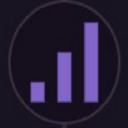-
 bitcoin
bitcoin $110323.126235 USD
1.94% -
 ethereum
ethereum $3864.833023 USD
1.25% -
 tether
tether $1.000393 USD
0.02% -
 bnb
bnb $1133.877748 USD
4.86% -
 xrp
xrp $2.393640 USD
1.11% -
 solana
solana $192.566078 USD
6.48% -
 usd-coin
usd-coin $0.999906 USD
0.00% -
 tron
tron $0.313196 USD
-2.80% -
 dogecoin
dogecoin $0.194944 USD
2.29% -
 cardano
cardano $0.643216 USD
2.65% -
 hyperliquid
hyperliquid $39.990234 USD
7.27% -
 chainlink
chainlink $17.375446 USD
0.89% -
 ethena-usde
ethena-usde $0.999536 USD
0.02% -
 stellar
stellar $0.310716 USD
0.33% -
 bitcoin-cash
bitcoin-cash $480.762464 USD
1.14%
How do you use BOLL to set a trailing stop loss?
Bollinger Bands help traders set dynamic trailing stop losses by adjusting to volatility, allowing them to lock in profits while riding trends in crypto markets.
Oct 18, 2025 at 03:22 am

Understanding BOLL and Its Role in Trailing Stop Loss
BOLL, or Bollinger Bands, is a widely used technical analysis tool in the cryptocurrency trading space. It consists of three lines: the middle band, which is typically a 20-day simple moving average (SMA), and two outer bands that represent standard deviations above and below the SMA. These bands expand and contract based on market volatility, making them highly adaptive to price movements.
Traders leverage Bollinger Bands to identify potential reversal points and manage risk through dynamic stop-loss mechanisms. One such method involves using the bands as a reference for setting a trailing stop loss, allowing traders to lock in profits while giving room for normal price fluctuations.
- The upper and lower bands act as dynamic support and resistance levels.
- When price touches or crosses the upper band, it may indicate overbought conditions.
- Conversely, touching the lower band might signal oversold territory.
- Volatility contraction, seen as narrowing bands, often precedes significant price moves.
- Expansion of the bands reflects increased market activity, which can influence stop-loss placement.
Setting a Trailing Stop Loss Using BOLL
Applying Bollinger Bands to trail stop loss orders requires aligning the stop level with the movement of the bands. This technique is especially useful in trending markets where price tends to ride along one of the bands.
By anchoring the stop loss to the opposite band, traders can stay in profitable positions longer without being prematurely stopped out due to short-term volatility.- In an uptrend, set the trailing stop loss near the middle or lower Bollinger Band.
- As price advances and pulls the bands upward, the stop loss moves accordingly.
- If the trend remains strong, the stop continues to rise, protecting accumulated gains.
- A close below the trailing stop level triggers an exit, securing profits.
- During downtrends, reverse the logic by placing the stop above the upper or middle band.
Adjusting Parameters for Optimal Performance
The default Bollinger Band settings (20-period SMA, 2 standard deviations) work well for many traders, but adjustments can improve responsiveness in fast-moving crypto markets.
Fine-tuning the period length or deviation multiplier allows customization based on asset volatility and trading timeframe.- Shorter periods (e.g., 10-day SMA) make the bands more sensitive to price changes.
- Increasing the standard deviation widens the bands, reducing false breakouts.
- Lower deviation values create tighter bands, triggering earlier exits.
- Pairing BOLL with volume indicators helps confirm whether a breakout is genuine.
- Testing different configurations on historical data improves strategy reliability.
Practical Examples in Crypto Trading
Cryptocurrency assets like Bitcoin and Ethereum often exhibit strong trends punctuated by sharp volatility swings—conditions ideal for Bollinger Band-based trailing stops.
- During a bullish rally, BTC price hugged the upper Bollinger Band for several days; a stop placed at the middle band would have avoided early exits.
- When ETH dropped suddenly after a news event, the lower band expanded downward, allowing a trailing stop to adjust and minimize losses.
- Altcoins with high volatility benefit from wider deviation settings to prevent whipsaws.
- On 4-hour charts, combining BOLL with RSI helps filter out weak trend signals before activating the trailing stop.
- Exchanges with API support enable automated trailing stops linked to BOLL levels via bots.
Frequently Asked Questions
What happens if the price repeatedly touches the stop loss level without reversing?Markets often test key levels multiple times. If price grazes the trailing stop but continues in the original direction, a tight band setting may lead to premature exits. Using a buffer zone or requiring a full candle close beyond the stop level can reduce this risk.
Can BOLL-based trailing stops be used in sideways markets?Sideways or range-bound conditions reduce the effectiveness of trend-following strategies. In such cases, Bollinger Bands may generate frequent false signals. Traders should consider switching to fixed stop losses or range-based exit rules during consolidation phases.
Is it better to use the middle or lower/upper band for stop placement?Using the middle band provides a tighter stop, increasing profitability per trade but raising the chance of being stopped out. The lower or upper band offers more breathing room, suited for volatile assets. Preference depends on risk tolerance and trading style.
How do you automate a BOLL trailing stop on common trading platforms?Platforms like TradingView allow scripting custom alerts based on BOLL values. Connect these alerts to broker APIs or bot services such as 3Commas or Gunbot to execute automatic trailing stops when price breaches predefined band-related thresholds.
Disclaimer:info@kdj.com
The information provided is not trading advice. kdj.com does not assume any responsibility for any investments made based on the information provided in this article. Cryptocurrencies are highly volatile and it is highly recommended that you invest with caution after thorough research!
If you believe that the content used on this website infringes your copyright, please contact us immediately (info@kdj.com) and we will delete it promptly.
- Essex Post Office, 5p Coins, and King Charles: A Royal Mint Revelation!
- 2025-10-23 10:30:16
- Waymo's Newark Airport AV Tests: Alphabet's AI Gamble Pays Off?
- 2025-10-23 10:30:16
- King Charles 5p Coins: A Royal Flush in Your Pocket?
- 2025-10-23 10:35:18
- Solana, Crypto Advisory, and Forward Industries: A New York Minute on the Future of Finance
- 2025-10-23 08:51:22
- MAGACOIN: Ethereum Whales Dive into the Hottest Presale of 2025
- 2025-10-23 08:51:22
- Kadena's End of the Road? KDA Token Plummets Amid Project Abandonment
- 2025-10-23 08:55:34
Related knowledge
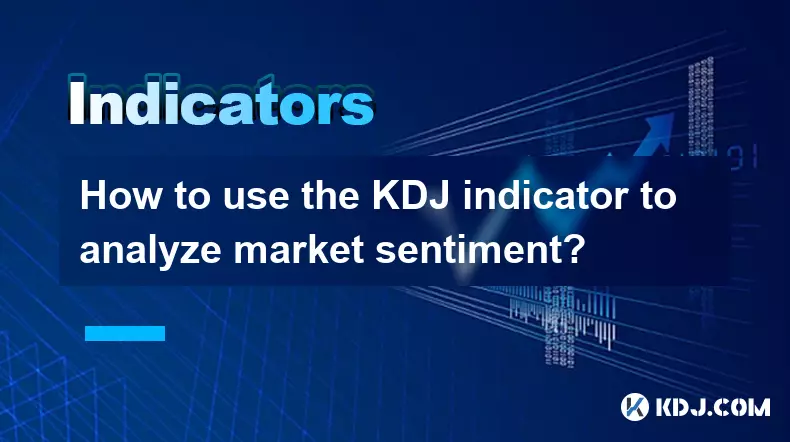
How to use the KDJ indicator to analyze market sentiment?
Oct 18,2025 at 07:18pm
Understanding the KDJ Indicator in Cryptocurrency Trading1. The KDJ indicator, also known as the Stochastic Oscillator, is a momentum-based technical ...
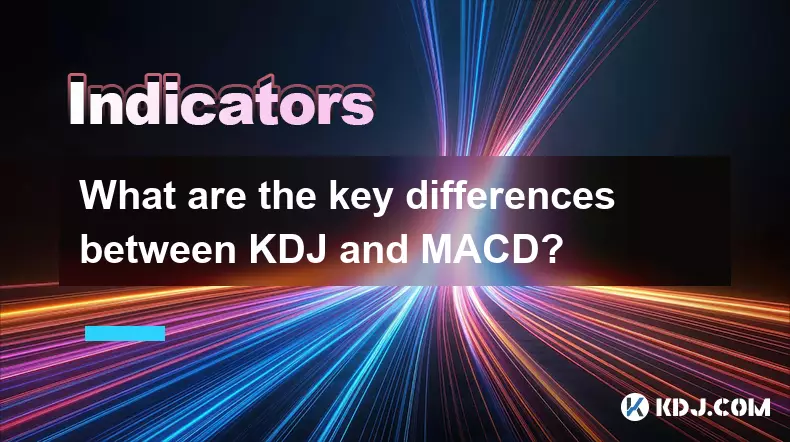
What are the key differences between KDJ and MACD?
Oct 18,2025 at 04:54am
KDJ Indicator: Core Mechanics and Usage1. The KDJ indicator is a momentum oscillator that combines the features of the Stochastic Oscillator with an a...
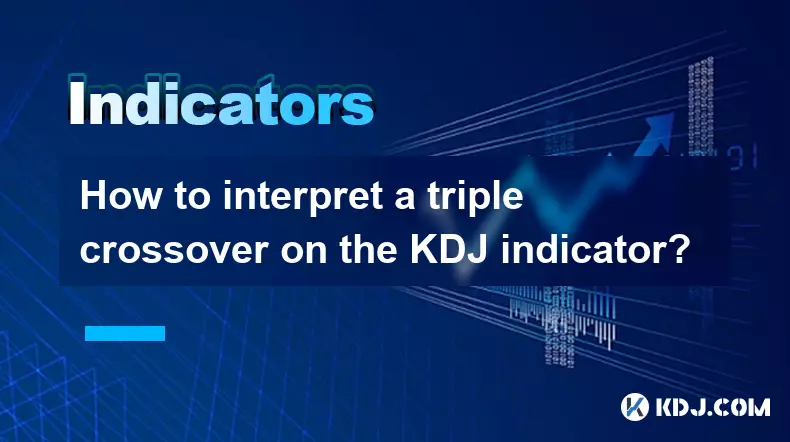
How to interpret a triple crossover on the KDJ indicator?
Oct 18,2025 at 01:54pm
Understanding the Triple Crossover in KDJ Indicator1. The KDJ indicator, a derivative of the Stochastic Oscillator, consists of three lines: K, D, and...

What's the best timeframe for the KDJ indicator?
Oct 20,2025 at 03:01pm
Understanding the KDJ Indicator in Crypto TradingThe KDJ indicator, an extension of the stochastic oscillator, is widely used in cryptocurrency tradin...
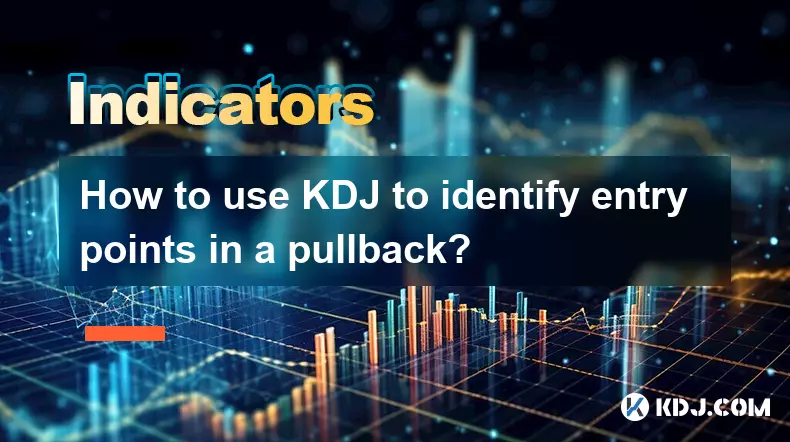
How to use KDJ to identify entry points in a pullback?
Oct 18,2025 at 09:36am
Understanding KDJ in the Context of Pullbacks1. The KDJ indicator, an extension of the stochastic oscillator, consists of three lines: %K, %D, and %J....
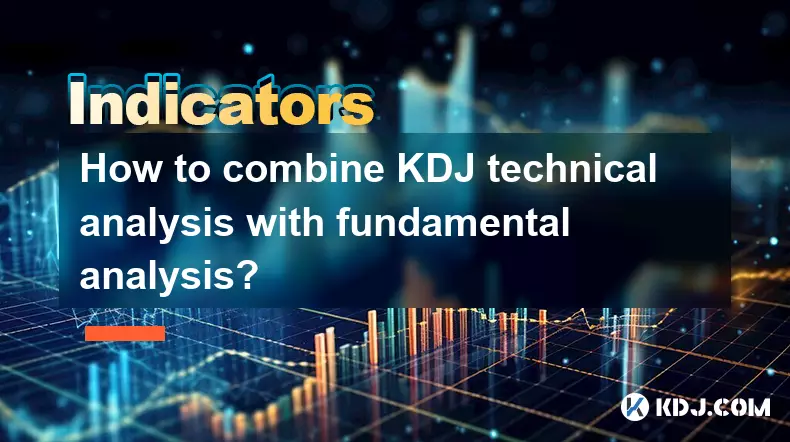
How to combine KDJ technical analysis with fundamental analysis?
Oct 20,2025 at 11:55pm
Understanding KDJ in the Context of Cryptocurrency Markets1. The KDJ indicator, originating from stochastic oscillator principles, is widely used in c...

How to use the KDJ indicator to analyze market sentiment?
Oct 18,2025 at 07:18pm
Understanding the KDJ Indicator in Cryptocurrency Trading1. The KDJ indicator, also known as the Stochastic Oscillator, is a momentum-based technical ...

What are the key differences between KDJ and MACD?
Oct 18,2025 at 04:54am
KDJ Indicator: Core Mechanics and Usage1. The KDJ indicator is a momentum oscillator that combines the features of the Stochastic Oscillator with an a...

How to interpret a triple crossover on the KDJ indicator?
Oct 18,2025 at 01:54pm
Understanding the Triple Crossover in KDJ Indicator1. The KDJ indicator, a derivative of the Stochastic Oscillator, consists of three lines: K, D, and...

What's the best timeframe for the KDJ indicator?
Oct 20,2025 at 03:01pm
Understanding the KDJ Indicator in Crypto TradingThe KDJ indicator, an extension of the stochastic oscillator, is widely used in cryptocurrency tradin...

How to use KDJ to identify entry points in a pullback?
Oct 18,2025 at 09:36am
Understanding KDJ in the Context of Pullbacks1. The KDJ indicator, an extension of the stochastic oscillator, consists of three lines: %K, %D, and %J....

How to combine KDJ technical analysis with fundamental analysis?
Oct 20,2025 at 11:55pm
Understanding KDJ in the Context of Cryptocurrency Markets1. The KDJ indicator, originating from stochastic oscillator principles, is widely used in c...
See all articles



































































